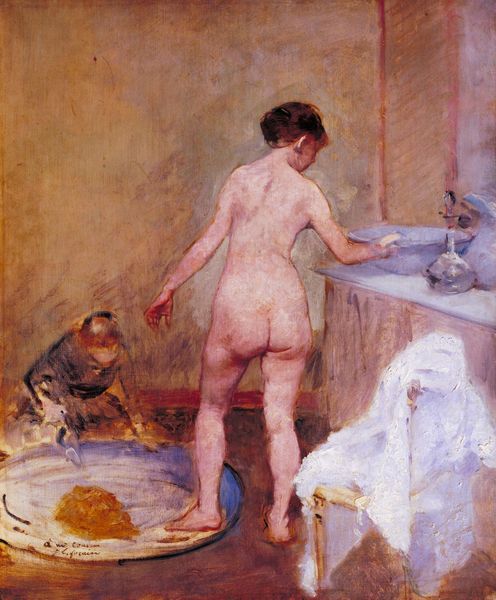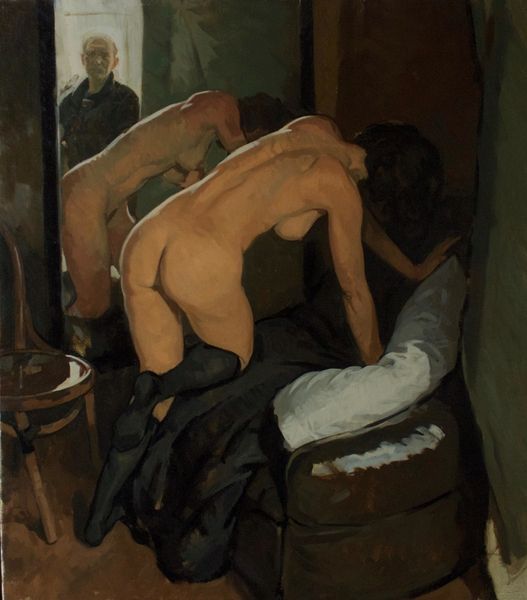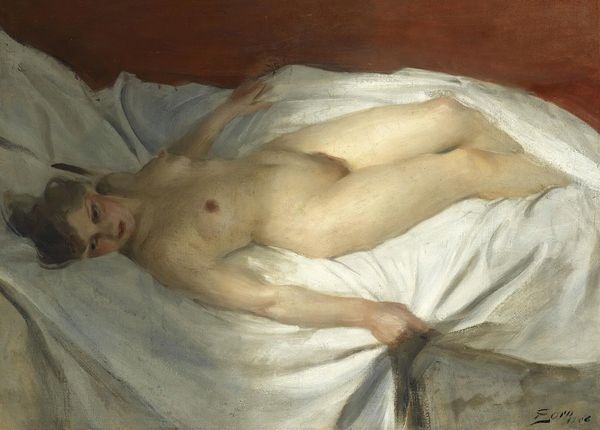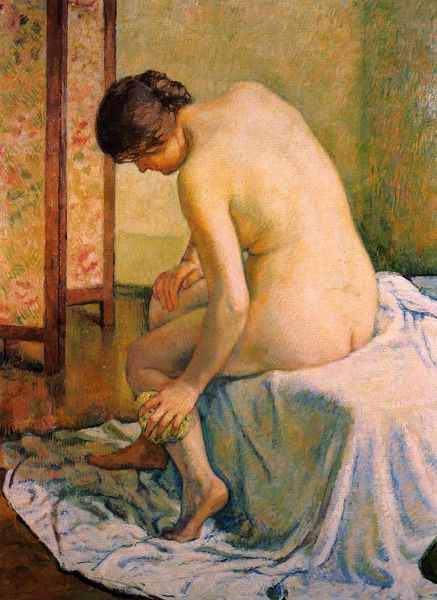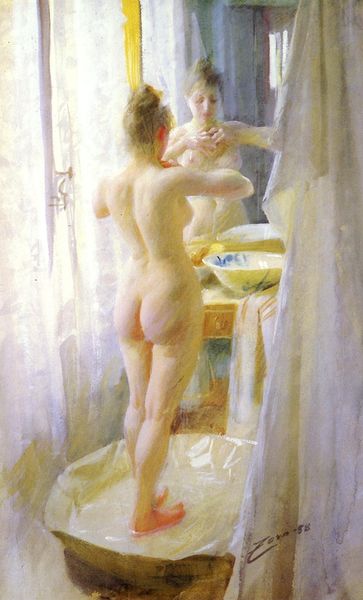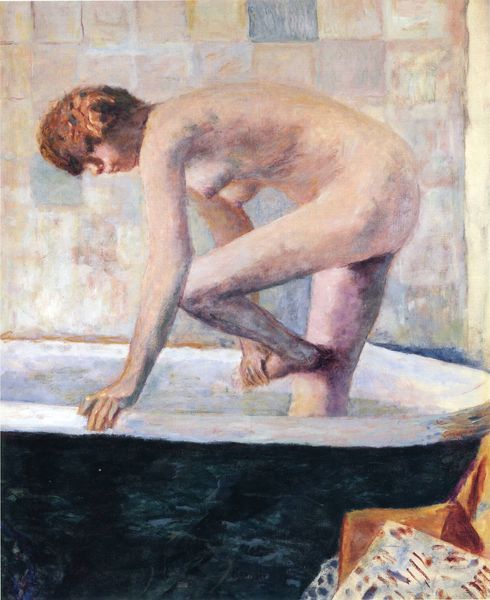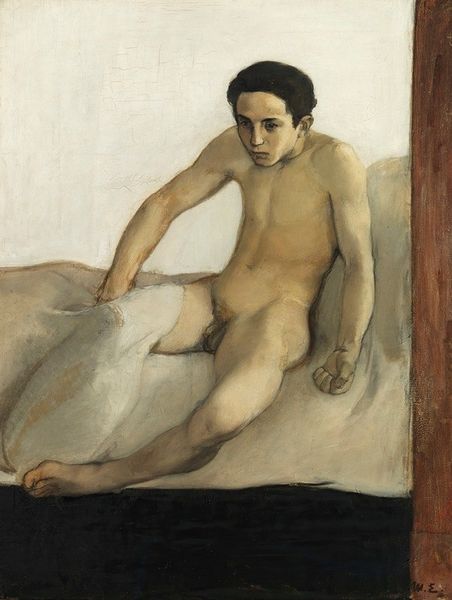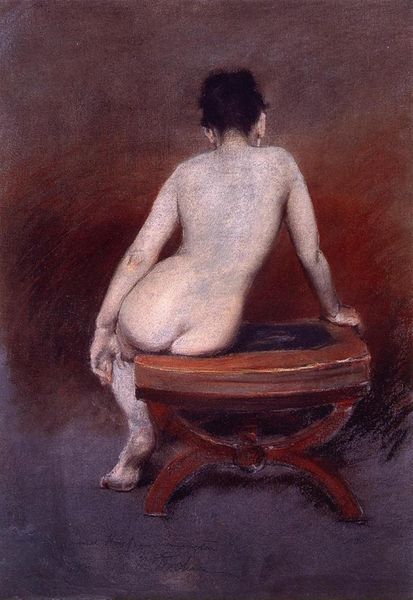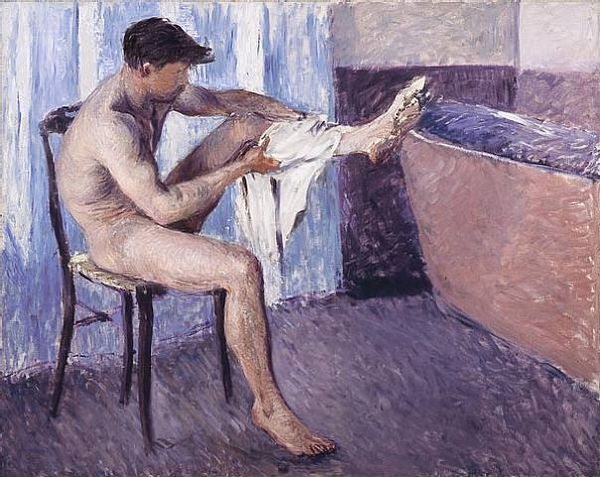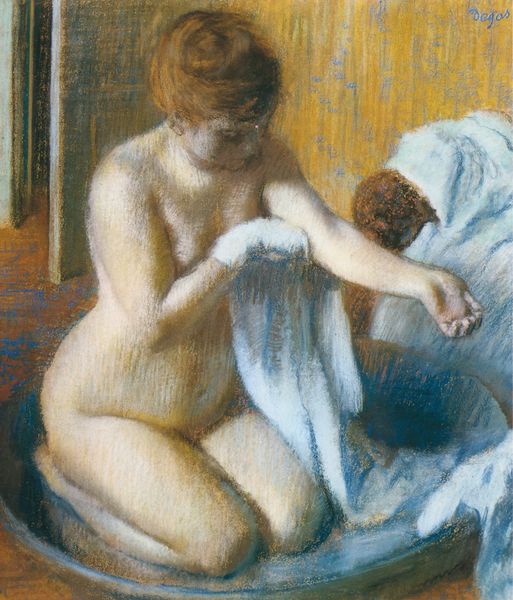
painting, oil-paint
#
painting
#
impressionism
#
oil-paint
#
figuration
#
oil painting
#
nude
#
male-nude
Copyright: Public domain
Curator: Gustave Caillebotte's "Man at His Bath," painted in 1884, depicts a nude male figure drying himself in what appears to be a modest bathroom. It's an oil painting currently housed at the Museum of Fine Arts in Boston. Editor: My immediate impression is a feeling of cool detachment. The color palette is muted, almost grayscale, giving a sense of austerity and introspection despite the intimate subject matter. Curator: Indeed. The choice to present this subject in such a matter-of-fact way disrupts traditional representations of the male nude in art history. It doesn't strive for heroic idealism. Caillebotte confronts societal perceptions and expectations of bourgeois masculinity. He depicts a private moment of vulnerability and perhaps challenges notions around gender roles. Editor: Absolutely. Looking at the composition, the positioning of the figure with his back to us denies us the male gaze. There's no glorification, no objectification—just a person in a daily routine. But even in that routine, are we not invited to consider themes around privacy and intimacy as they relate to gender, or class during the era it was produced? The bare feet track across the wood, all captured using impressionist brushstrokes—does that speak to the lived reality of this moment for a working man perhaps? Curator: You make a crucial point. Caillebotte’s own privileged background provided a different social lens. The painting subtly raises complex socio-economic questions regarding the portrayal of labor and leisure in art, pushing the boundaries of academic traditions. Caillebotte's attention to light and shadow humanises the ordinary aspects of life. His departure from the classical rendering of the male body forces us to contemplate who gets represented, and how, within art’s historical discourse. Editor: This painting certainly pushes viewers to engage with the male nude and, in doing so, reconsider the public and private sphere and gender representation overall, especially considering societal hierarchies embedded throughout history. Curator: Exactly. A work that compels a modern reckoning and re-evaluation is something to reflect upon as we continue to look at more works in the exhibition. Editor: Precisely, a fantastic demonstration of how understanding its historical framework and the time it was made contextualize our viewing today.
Comments
No comments
Be the first to comment and join the conversation on the ultimate creative platform.
